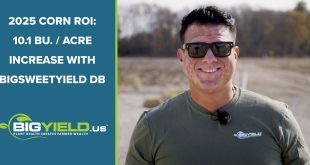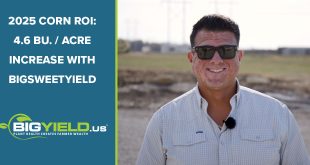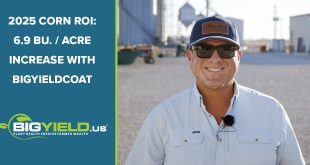Cover crops are commonly viewed as tools to enhance the soil. Without a doubt, healthy soil can offer a production advantage. However, evaluating cover crops based solely on their soil health improvement potential alone may overlook the comprehensive value that they can present to an operation.
For example, a 2016 nationwide cover crop survey found that cash crop yields can increase when grown in a cover crop system, which drives added value. The survey, which was conducted by the Conservation Technology Information Center, North Central Sustainable Agriculture Research & Education and American Seed Trade Association, collected yield data from 430 corn producers. On average, 2015 yields measured 180.2 bushels per acre with cover crops and 176.8 bushels per acre without cover crops. In soybeans, data from 395 farmers found that yields averaged 54.3 bushels per acre after cover crops and 52.7 bushels per acre without cover crops. Additionally, a majority of the survey respondents shared that cover crops can make yields less vulnerable to challenging weather conditions.
In terms of profitability, the 2016 survey found that roughly one-third of the respondents improved profitability by using cover crops. Six percent stated that profitability dropped when using cover crops, and the remaining respondents didn’t note a profitability difference or lacked adequate data to form a conclusion. You can access the full survey results here.
At BigYield.us, we’re focused on making cover crops a profitable option for our growers. Our team has considered several opportunities that may offset cover crop production costs at the minimum and potentially add a profit center in other cases.
- Use cover crops as a nutrient source. If a cover crop can supply nutrients, then fertilizer application requirements have the potential to decline. Plus, some cover crops can scavenge nutrients and reduce leaching.
- Graze cover crops. Cover crops produce forage cover that can supply a cost-effective feed for livestock. Operators who already own livestock may choose to graze cover crops. Alternatively, producers who traditionally have grown only cash crops may add livestock or lease fields to livestock producers if the cover crop can produce adequate feed. The story below from Drovers shares experiences from multiple farmers who have grazed cover crops.
- Grow cover crops for seed. As cover crop acreage expands, cover crop users need access to more seed. Cover crop seed producers may earn revenue from an added income stream and diversify their operations. Growers considering seed production should consider factors such as input expenses, yield, price, management requirements and resource allocation, according to this guide from Michigan State University Extension. During the recent Organic Field Day at the University of Missouri’s Bradford Research Center, speakers noted heightening demand for multiple cover species. Those include rye, clovers, vetches, buckwheat and cowpeas.
- Sell into a niche market. Some cover crops may produce a marketable product with niche market appeal. Several ideas were mentioned during the recent Organic Field Day at the University of Missouri’s Bradford Research Center. For example, millet grown for cover purposes also produces seed that may have application as a bird seed. Flowers and seed from sunflowers, which represent another potential cover crop, offer two possible income streams.
In this video, Kent Kauffman of BigYield.us explains more about these possibilities and efforts that The Farm Research Center has taken study approaches that maximize cover crop profit potential.
If you’d like to discuss more ideas to get big yields on your farm, please call or email anytime.
 BigYield High Yield Soybeans, High Yield Corn, and High Yield Wheat
BigYield High Yield Soybeans, High Yield Corn, and High Yield Wheat



